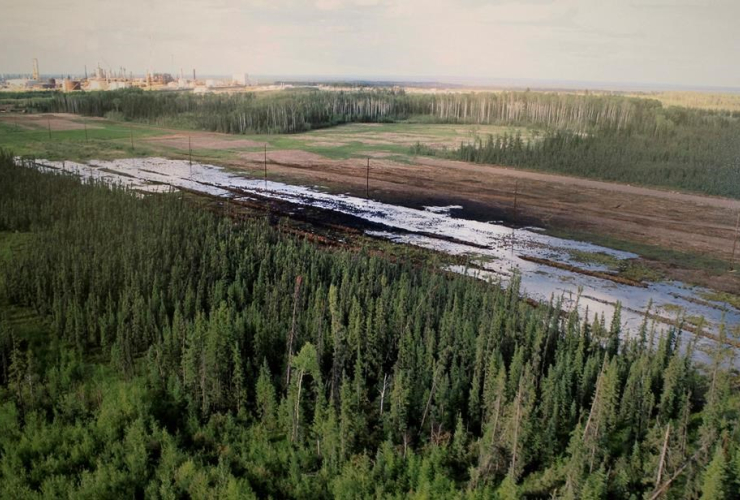Alberta's energy and environment ministers say they're troubled by a huge pipeline spill in the oilsands region, but they have confidence the provincial regulator will get to the bottom of what went wrong.
Marg McCuaig-Boyd and Shannon Phillips toured the cleanup site 35 kilometres southeast of Fort McMurray on Friday, along with a representative from a nearby aboriginal community.
McCuaig-Boyd called the spill "unacceptable."
"We all want to know that when an incident like this happens, not only is it contained and cleaned up, but every possible effort is made to find out what went wrong and fix it, prevent it from happening again here or anywhere else in Alberta."
A contractor discovered the spill last week at Nexen Energy's Long Lake oilsands project. About five million litres of bitumen, sand and produced water covered a 16,000-square metre area.
Nexen has apologized for the rupture on the year-old, double-walled pipeline, which went undetected by its warning system.
Both ministers said they have confidence in the investigation underway by the Alberta Energy Regulator, an independent watchdog, and that pipelines remain the safest way to transport petroleum products.
The pipeline had been deemed by the Alberta Energy Regulator to be "low risk" because of its age and leak detection system, said Kirk Bailey, the regulator's executive vice-president of operations.
The investigation could result in fines or criminal action, he said.
"We have all those options in mind as we are analyzing the information and making decisions about the investigation," he said.
The possibility that the pipeline could have been leaking for as long as two weeks before it was shut off is one of "a number of things that are troubling about this," said Phillips.
McCuaig-Boyd said one of the main topics of conversation during Friday's visit was how to close communication gaps with First Nations when an incident occurs.
Byron Bates, a councillor with the Fort McMurray No. 468 First Nation, said he saw a much busier cleanup scene during Friday's visit than he did a week earlier. Measures are in place to keep animals away and contaminated water is being "sucked" out, he said.
"It's still two big football fields of black goo. So, it's still very disturbing," he said.
"There's members of my First Nation that can't even watch the news when they see the spill site. They're afraid to. People are very connected to the land, so it really affects them."


Comments